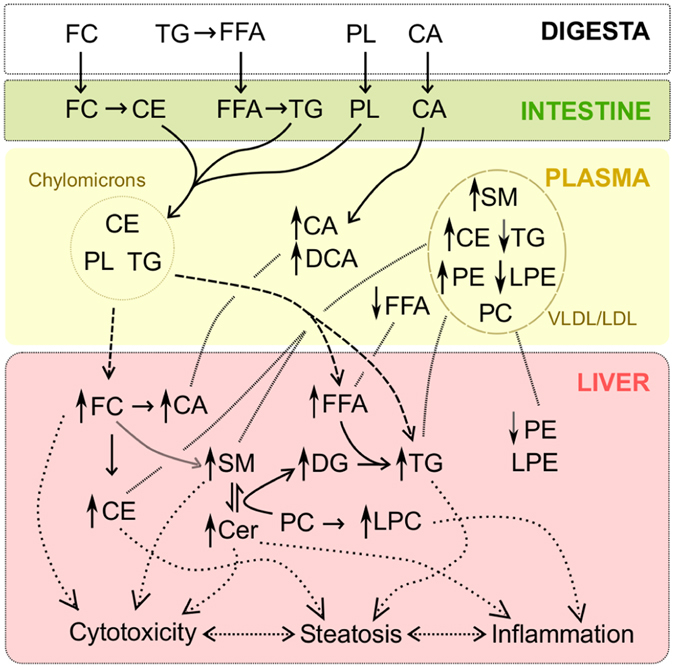Figure 7.

Model: Mechanistic reconstruction of metabolic changes as observed in the HFHCC diet-induced NAFLD/NASH. High abundance of dietary cholesterol initiated a lipid imbalance in the liver and also the plasma. Presence of dietary CA facilitated lipid absorption and contributed to the severity of the phenotype in the short 3 weeks of the HFHCC diet. High levels of FC and CE in the liver affected SM metabolism. This resulted in the significant increase in levels of hepatic SM, Cer and DG. Levels of hepatic TG were also elevated due to sequestration from plasma, with only a putative minor contribution from the elevated FFA and DG levels. Levels of PC were not affected both in the liver and plasma, whereas PE levels showed a decrease in the liver and an increase in the plasma. A compositional shift of VLDL/LDL could explain the increased plasma CE, SM and PE levels. High hepatic levels of CE and TG were the contributing factors for steatosis. High hepatic levels of FC, SM, Cer and FFA were the contributing factors for cytotoxicity and inflammation leading to steatohepatitis.
